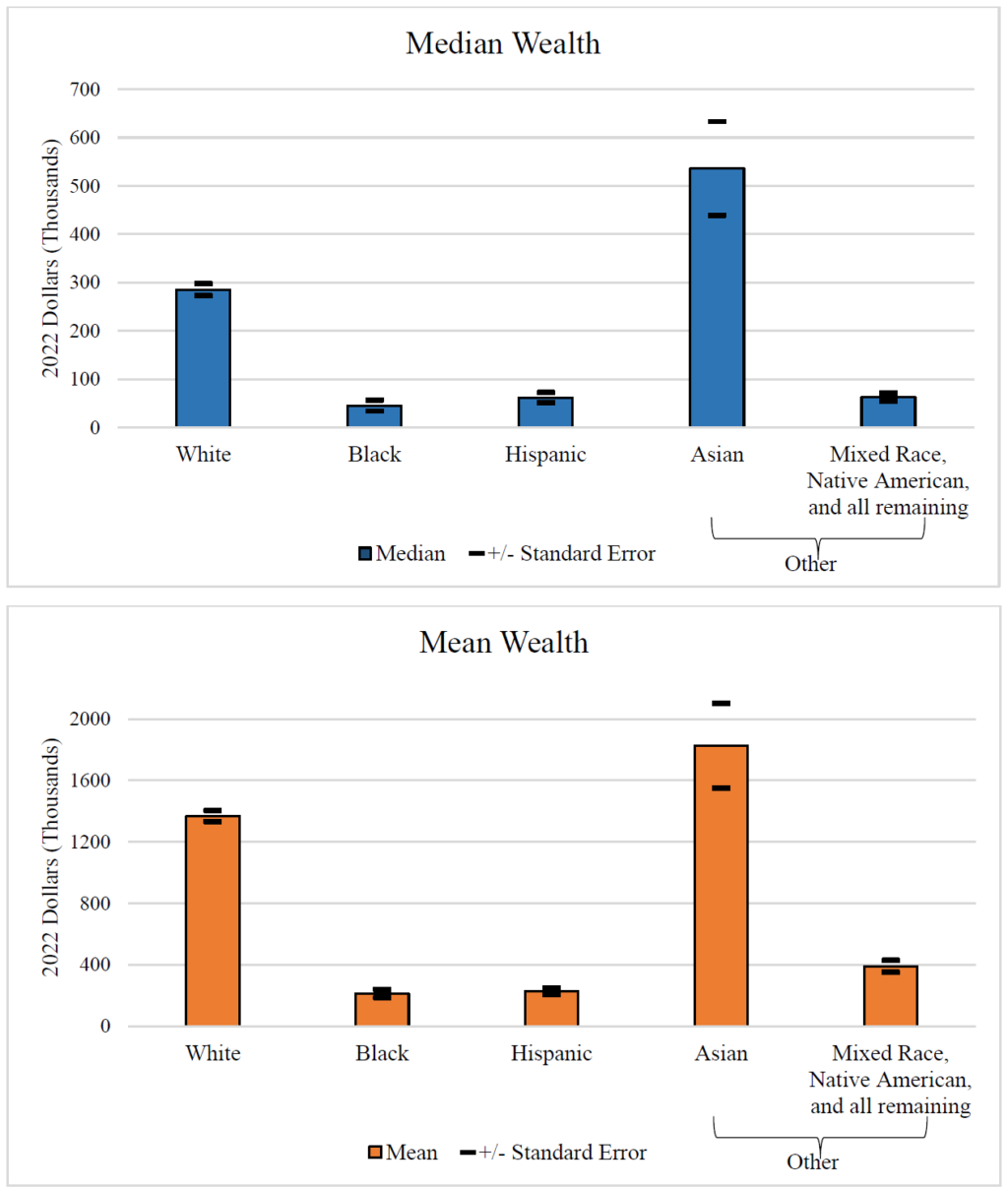
WASHINGTON — The St. Louis Federal Reserve Bank revealed that 60 percent of American household net worth has occurred since the election of Barack Obama as the first Black president. However, the economic catapult only began to include African-American households in the past five years.
According to the quarterly study, (Board of Governors of the Federal Reserve System (US), Households and Nonprofit Organizations; Net Worth, Level [TNWBSHNO], retrieved from FRED, Federal Reserve Bank of St. Louis; https://fred.stlouisfed.org/series/TNWBSHNO, September 13, 2024.), the total net worth of households and non-profits stood at $163.7 trillion in the second quarter of 2024.
That meant the average white family has a net worth of $285,000, according to the Survey of Consumer Finances, while the average Asian family has a net worth of $536,000.
For Black families, the average net worth is $44,900. However, African-American net worth grew faster between 2019 and 2022 than any other group because of the impact of the Congressional Black Caucus, which assumed committee chairs in 2018 for the first time since 2010 and held them through 2022.
The result was the first time in American history that the federal government made direct investments in Black households, institutions and businesses. In 2014, the opening retreat of Black Wealth 2020, I called for a $30 billion investment in Black America.
In 2021, more than $33 billion in direct investments in Black businesses, Historically Black Colleges and Universities, Black farmers flowed as a direct result of the victories of Sens. Raphael Warnock and Jon Ossoff in Georgia, which created a Democratic majority in the U.S. Senate to work in tandem with the House majority.
Individual families also benefited from American Rescue and Recovery Act programs such as the second stimulus payment, a refundable child care tax credit, extended unemployment insurance and subsidies for the Affordable Care Act. According to the Fed, “Black and Hispanic families saw a larger increase in income due to non-retirement government transfer programs (yellow), such as unemployment insurance (UI) or food stamps (SNAP). Compared to wage income, these sources are likely to be less available in the future given the unprecedented pandemic-era fiscal support that has already ended or will end.”
As the Caucus holds its annual legislative weekend in Washington basking in the glow of a successful debate outing by Vice President Kamala Harris, continuing her momentum since becoming the Democratic nominee for President in late July, the data helps shape the argument about why African-Americans should vote in larger numbers than ever before.
In the past six years, the Black community has begun to approach representation at all levels of government commensurate with our 13 percent of the population, particularly in state government and in Congress. In states like New York, Illinois, Maryland, Virginia, California and Michigan, the combination of executive and legislative leadership creates leverage over state budgets and allocation of federal disbursements, which are usually sent to state governments.
This has been one of the major objectives of the Journal of Black Innovation National Black Business Month, which created the Black Business Affinity Index to evaluate state governments with a doubling of Black businesses over the past 20 years.
In New York State, we were able to prevent the downgrading of a trauma center at the Downstate Medical Center in Brooklyn with $300 million in new funding in the most recent state budget because the leaders of both houses of the legislature are African-American.
Now those state governments are in position to allocate $1.6 trillion from the Bipartisan Infrastructure Act, Chips and Science Act and Inflation Reduction Act.
The Sept. 10 debate exposed in raw form the argument being made to white voters by the disgraced Republican Donald Trump, that Black people, represented by pet-eating Haitians in Ohio, are taking everything away from them.
Historically, the debate began in San Francisco six decades ago when Ronald Reagan became governor by demonizing the students at San Francisco State University seeking Black studies. In an historical irony, Vice President Harris was born into those civil rights demonstrations.
However, there is a case to be made to white Americans that they fare much better under African-American leadership. According to the St. Louis Fed data, the aggregate net worth was just over $60 trillion in 2007, meaning it has grown more than $100 trillion during the two terms of Obama and the first term of Biden-Harris.
That data can help build a broader consensus for more direct appropriations to African-American households, particularly for housing, education and business opportunities.


